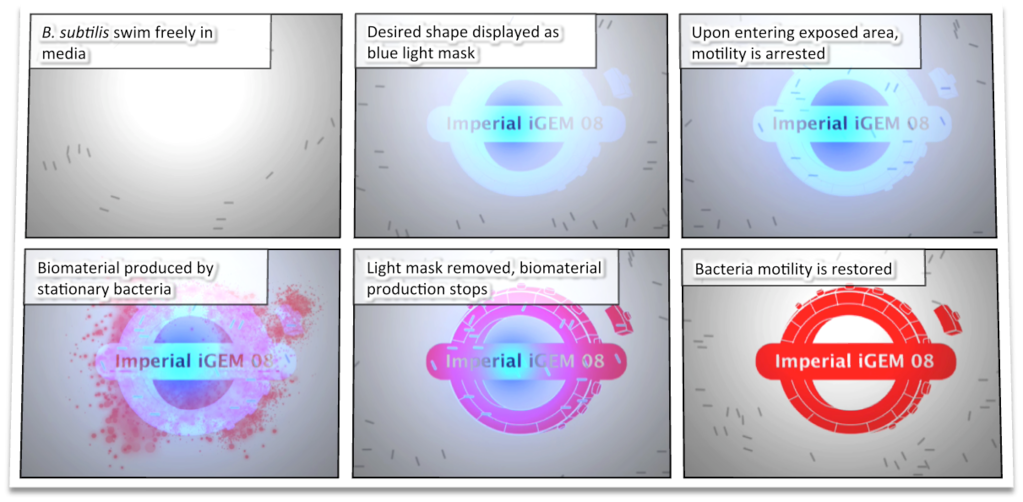Team:Imperial College
From 2008.igem.org
(Difference between revisions)
m |
m |
||
| Line 11: | Line 11: | ||
|}} | |}} | ||
| - | {{Imperial/Box1|'''<html><font size=6px>Overview</font></html>'''|<html><center><object width="425" height=" | + | {{Imperial/Box1|'''<html><font size=6px>Overview</font></html>'''|<html><center><object width="425" height="350"> <param name="movie" value="http://www.youtube.com/v/pqEmKkY5DxA"> </param> <embed src="http://www.youtube.com/v/pqEmKkY5DxA" type="application/x-shockwave-flash" width="425" height="350"> </embed> </object></center></html> |
*First by utilising an endogenous light-sensing mechanism, the bacteria is captured in the desired location using 3D holography. | *First by utilising an endogenous light-sensing mechanism, the bacteria is captured in the desired location using 3D holography. | ||
*Next bacterial locomotion is suspended in the region of interest using a recently-discovered clutch mechanism. This involves disengaging the flagellum from the motor protein. | *Next bacterial locomotion is suspended in the region of interest using a recently-discovered clutch mechanism. This involves disengaging the flagellum from the motor protein. | ||
Revision as of 01:36, 30 October 2008
|
||||||||||||||||
 "
"







